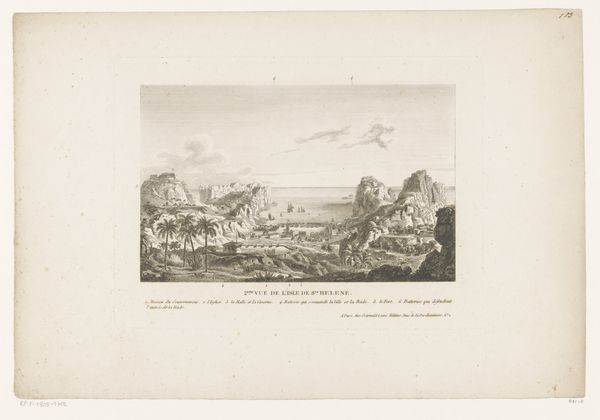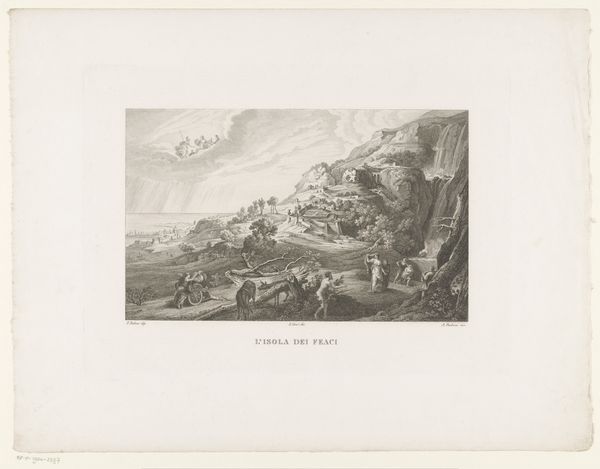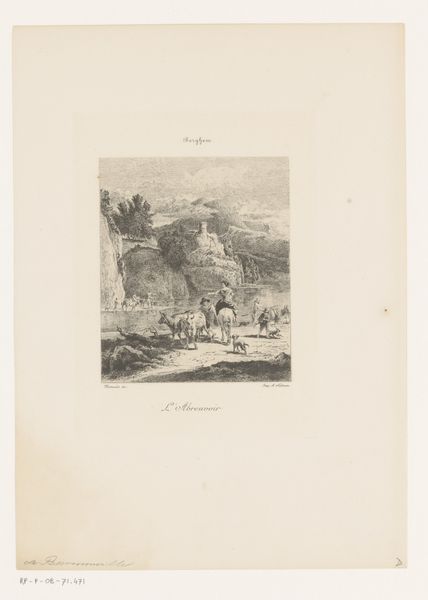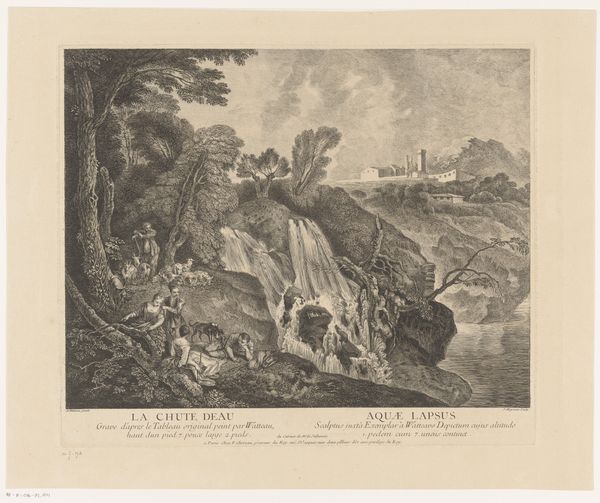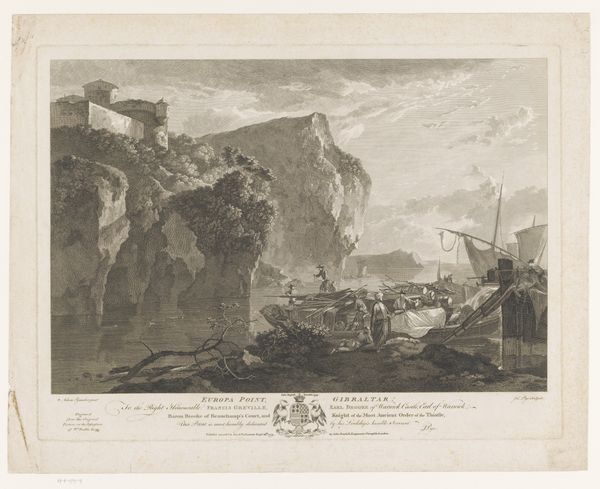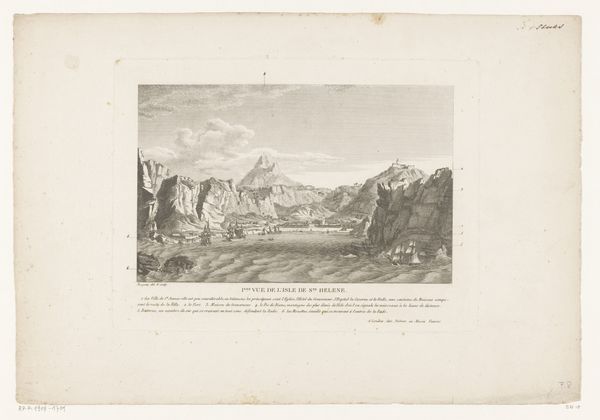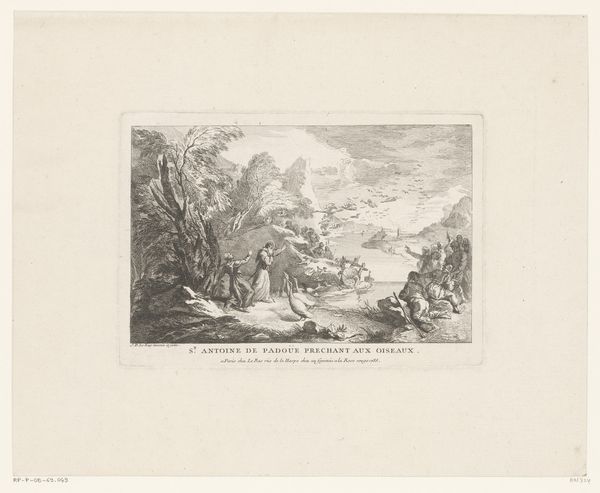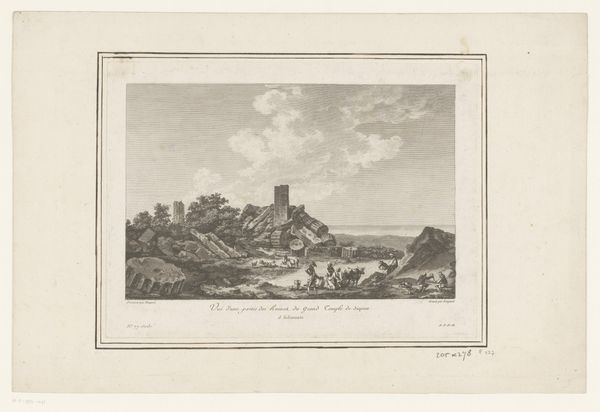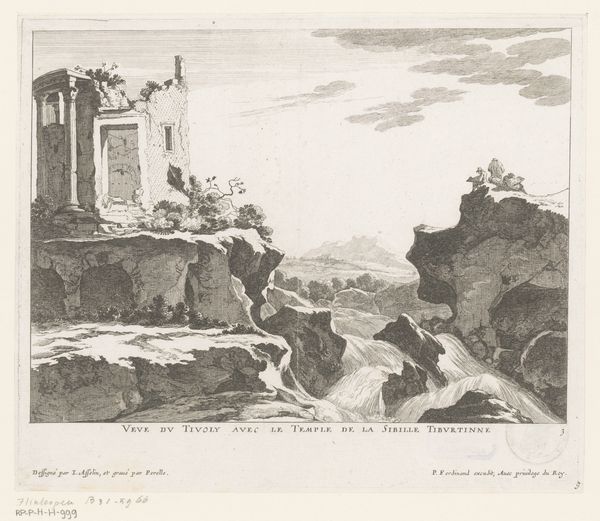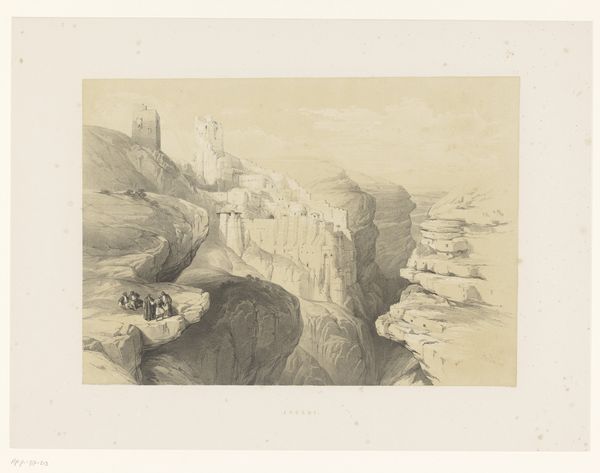
Ruïne van de toren van St. Rochus of Patriarchen in Lissabon, 1755 1758 - 1760
0:00
0:00
anonymous
Rijksmuseum
Dimensions: height 284 mm, width 395 mm
Copyright: Rijks Museum: Open Domain
Curator: This is an engraving from between 1758 and 1760, an anonymous rendering of the "Ruins of the Tower of St. Rochus of Patriarchen in Lisbon, 1755." It's housed here at the Rijksmuseum. Editor: Devastating, isn't it? The stark black and white rendering heightens the sense of loss and desolation. Those jagged edges…you can almost feel the tremor. Curator: Absolutely. Notice how the tower, a symbol of stability and faith, is fractured and crumbling. The human figures clustered in the foreground seem lost, perhaps a visual representation of collective trauma and spiritual questioning in the face of such disaster. Editor: What strikes me is the deliberate emphasis on the physicality of destruction. Look at the detailed depiction of the rubble. Each individual piece, painstakingly rendered through engraving. The material waste of disaster made brutally, artistically, apparent. The consumption of a city…a cathedral! By fire and earth. Curator: Indeed. The very medium of print allows for the widespread dissemination of this image, facilitating a collective mourning and perhaps even a sense of shared European identity in response to the Lisbon earthquake. The image becomes a powerful mnemonic device, a way to remember and process the catastrophe. Editor: I agree. The reproducibility speaks volumes. To me, it emphasizes how easily infrastructure—especially that made from earth—can be turned to dust. It's about the transformation of material into debris and a wide availability to witness the consequences of the event depicted. Curator: The artistic choices subtly invite us to contemplate not only the physical devastation, but also the fragility of faith and societal structures. It's a multi-layered approach of a very delicate process. Editor: Thinking about the print's process makes the final effect so stark. Seeing labor translated in such meticulous form reminds you that the event being memorialized represents devastation. Curator: This artwork invites us to consider how shared trauma and memory can be forged from devastation. Editor: For me, this engraving underscores a brutal fact, the easy transformation from stability to instability through the violence of earthly materials.
Comments
No comments
Be the first to comment and join the conversation on the ultimate creative platform.
